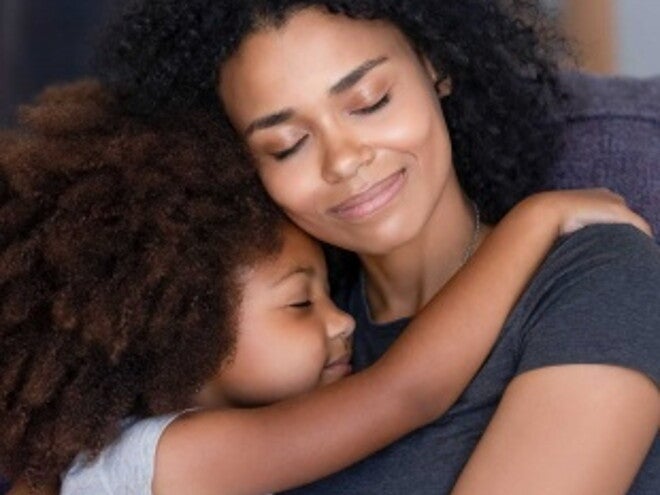
Learning the Language of Happiness
We associate 3 to 5 year-old children with joyfulness, energy and excitement.
Young children typically exude an almost unconstrained love for life combined with a general sense of awe and wonder. Many people who spend time with them on a daily basis say they cannot imagine their lives without the emotional energy that they get from being in the company of the youngsters.
This makes one wonder why otherwise happy young children can sometimes become so overwhelmed with emotion that they cannot listen to reason.
The answer to this question lies hidden in the brain and its development. Interestingly enough, the emotional brain is situated lower down, while the thinking brain is way up high, in the top front region behind a person’s forehead. A child’s developing brain is wired from the bottom upwards.
As a result, the emotional brain is more densely wired and more active during the early years of life, with the thinking brain developing more slowly until it finally catches up with the emotional brain after the fifth birthday.
Practically speaking, this means that young brains are better at experiencing emotion than managing those emotions.
This explains why they experience emotions with full-blown intensity long before their rational, thinking brain is structurally ready to make sense of it all. Practically speaking, this means that under fives typically need the support of patient adults to help soothe them and help bring them back to inner calm when they are overwhelmed by emotion.
Psychologists refer to the skill of learning to calm oneself as “the ability to self-regulate”.
They say self-regulation is a skill like any other that needs to be learnt through the development of new pathways in
the brain – just as a child would learn a new language.
Here are a few pointers to keep in mind:
- Children naturally get better at learning to deal with big emotions as they grow older. With the necessary support and guidance, a three year-old can be expected to become far more emotionally stable and mature as they approach the age of five.
- Children find it easier to bounce back from big emotions when they are in a good space. Being overstressed, overtired or feeling emotionally disconnected from parents, operates against children. This is because their amygdala (the emotional brain) becomes overly sensitive when they experience stress, sleep deprivation or fearfulness.
- All children experience daily stress. We cannot shield our children against natural disappointments and frustrations, nor can we be at their beck and call in an attempt to keep them happy. They need to experience healthy, loving boundaries so that they can practise dealing with not always getting their way.
- We need to differentiate between a manipulative tantrum and a true meltdown. ϑ Psychologists normally advise parents to physically move away from and ignore children when they become emotional during an argument or when they are throwing a tantrum to get their way. However, when young children are truly overwhelmed by big emotions and unable to speak or calm themselves, we need to recognise that type of tantrum as a true meltdown. The best solution then is to simply be there for them by holding them close and rocking them to reinstate their inner calm without arguing or upsetting them even further with words and actions. If a child doesn’t want to be held, we can stay within an approachable distance while waiting for the emotional storm to blow over.
It’s good to keep in mind that children learn to self-regulate just as they would learn to speak a language.
Just as is the case with any other language, they slowly but surely learn to speak the language of happiness through personal practise and being around people who speak it fluently. In other words, teaching the language of happiness to our children starts with being happy and emotionally intact when we are disappointed or frustrated. Young children learn to self-regulate in the company of parents who are mature in this way.
Another way of laying a strong foundation for our children’s happiness is by making sure that their tummies are happy too.
NESTLÉ® LACTOKID® 4 is a delicious and creamy drink for growing children aged 3 to 5 years containing a combination of tummy-friendly ingredients. It is specially formulated for your growing child.
NESTLÉ® LACTOKID® 4 is the only drink for growing children that contains COMFORTIS® – an active culture. It is also a source of Vitamins A, B1, B2, C, D, E and the minerals Iodine & Zinc.
When children feel right, they can enjoy all the ways of growing up happy, without unnecessary discomfort and uneasiness.
References: 1. Siegel DJ, Bryson TP. The Whole-Brain Child: 12 revolutionary strategies to nurture your child’s developing mind. New York: The Randomhouse
Publishing Group; 2011. 2. Bristol Child Parent Support. Surviving and Managing Tantrums [Online]. Positive Parenting and Sleep Solutions. [cited 2021 May 25].
Available from: URL: https://bristolchildparentsupport.co.uk/surviving-and-understanding-tant... 3. Pino-Pasternak D, Whitebread D. The role of parenting in children’s
self-regulated learning [Online]. Vol. 5, Educational Research Review. Elsevier Ltd; 2010. p. 220–42. Available from: URL: http://dx.doi.org/10.1016/j.edurev.2010.07.001
IMPORTANT NOTICE. NESTLÉ® LACTOKID® 4 is not a breast-milk substitute, and is formulated to meet the changing nutrition needs of healthy children older than 3 years.
Nestlé®
November 2021